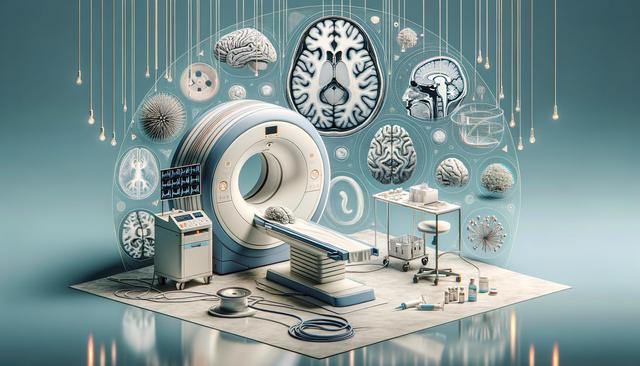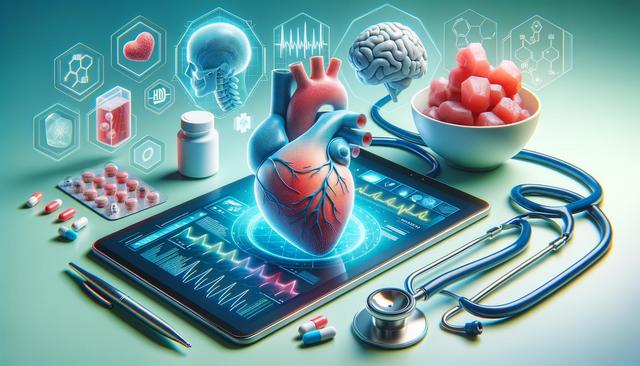Recognizing the Warning Signs of a Stroke
One of the most critical steps in stroke treatment is early recognition. Quick action can reduce the extent of brain damage and improve the chances of recovery. Recognizing the warning signs of a stroke involves understanding the symptoms that indicate an emergency. These symptoms often come on suddenly and may include:
- Facial drooping, typically on one side
- Weakness or numbness in the arm or leg, especially on one side of the body
- Slurred speech or difficulty understanding speech
- Vision problems in one or both eyes
- Loss of balance or coordination
Immediate response is crucial. If any of these signs are observed, calling emergency services right away can make a significant difference. When to seek medical help and the importance of monitoring cannot be stressed enough, as every minute counts during a stroke.
Risk Factors That Increase Stroke Likelihood
Understanding the risk factors that increase stroke likelihood is essential for both prevention and management. Some risk factors are controllable through lifestyle changes, while others, such as age and genetics, are not. Key modifiable risk factors include:
- High blood pressure
- Smoking
- Diabetes
- High cholesterol
- Obesity and physical inactivity
- Excessive alcohol consumption
Non-modifiable risk factors include age, family history, gender, and ethnicity. Being aware of these can help individuals and healthcare providers develop more effective prevention strategies. Regular check-ups and monitoring these factors can significantly reduce the risk of experiencing a stroke.
Different Types of Stroke and Recovery Timelines
There are several types of stroke, each with its own causes and recovery outlook. The most common types include:
- Ischemic stroke – caused by a blockage in an artery supplying blood to the brain
- Hemorrhagic stroke – occurs when a blood vessel in the brain bursts
- Transient Ischemic Attack (TIA) – often called a “mini-stroke,” with temporary symptoms
Recovery timelines vary depending on the type and severity of the stroke. While some individuals may regain function within a few weeks, others may take months or even years. Early rehabilitation and consistent medical follow-up can speed up the process and improve outcomes. Each person’s journey is unique, and individualized care plans are essential.
Rehabilitation and Daily Exercises for Post Stroke Recovery
Rehabilitation plays a vital role in helping stroke survivors regain lost skills and maintain independence. Rehabilitation and daily exercises for post stroke recovery can include a combination of physical, occupational, and speech therapies. Common goals during rehab include:
- Improving mobility and strength
- Regaining the ability to perform daily tasks
- Enhancing communication and cognitive skills
Daily exercises often focus on repetitive movements to retrain the brain. These may include walking, stretching, hand and finger movements, and speech practice. Support from caregivers and therapists is essential, as encouragement and consistency can greatly influence progress. Additionally, adaptive tools and home modifications may help individuals manage daily activities more effectively.
When to Seek Medical Help and the Importance of Monitoring
Recovering from a stroke is a long-term process that requires ongoing medical support. Knowing when to seek medical help and the importance of monitoring cannot be overstated. Recurrence is a real risk, so continuous monitoring of blood pressure, cholesterol, and other vital signs is recommended. Individuals should seek immediate medical attention if they experience:
- New or worsening symptoms
- Sudden confusion or speech difficulties
- Unexpected weakness or numbness
- Unexplained headaches or dizziness
Follow-up visits with healthcare providers ensure that medication and rehabilitation plans are effective. This ongoing care helps prevent future strokes and supports steady recovery. It also allows for timely adjustments to treatment plans based on the patient’s progress and changing needs.
Conclusion: Staying Informed and Proactive
Stroke treatment and recovery require a proactive and informed approach. Recognizing the warning signs of a stroke early can save lives. Understanding the risk factors that increase stroke likelihood helps in taking preventive measures. Each type of stroke has its own recovery pathway, and knowing the differences can aid in setting realistic expectations. Rehabilitation and daily exercises for post stroke recovery are essential tools in regaining independence. Most importantly, knowing when to seek medical help and the importance of monitoring ensures long-term well-being. For individuals and caregivers alike, staying informed and engaged is key to navigating the challenges and milestones of stroke recovery.




Leave a Reply